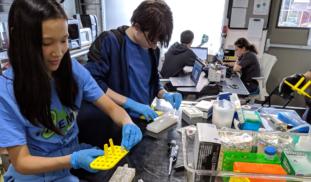Please wait...
About This Project
The bacterium Komagataeibacter rhaeticus has the ability to naturally produce bacterial cellulose (BC) which possesses many unique, highly useful properties suitable for a wide range of applications. We hypothesize that an optogenetic circuit in an engineered strain of K. rhaeticus grown in an optimized bioreactor can spatially control attachment of proteins to the surface of BC membranes to enable fine-tuning of these properties for different applications.
More Lab Notes From This Project

Browse Other Projects on Experiment
Related Projects
Open technologies for the identification of local fungi for decentralized biofabrication
The use of Open Scientific Hardware and locally produced reagents would enable biomaterial-focused citizen...
Leveraging understudied spider species to uncover novel biology
Over $1.425B has been invested into spider silk companies, yet less than 20 annotated spider genomes are...
Laser directed infrared spectroscopy to analyze microplastics down to 20 microns and speed up data analysis
Microplastic analysis is a very time-consuming procedure while smaller-sized plastics (<300 microns...





